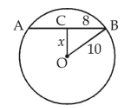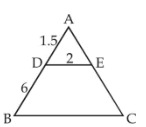 Introduction
Introduction
RRB NTPC (Non-Technical Popular Categories) 2019 – First Stage Computer Based Test (CBT), conducted in online Mode, has: a duration of 90 minutes [120 Minutes for eligible PwBD candidates accompanied with Scribe], consists of 3 sections, namely – General Awareness, Mathematics and General Intelligence & Reasoning. The 3 sections are not separately timed. There is a Negative marking in RRB NTPC First Stage CBT and [latex]\frac{1}{3}[/latex]rd marks are deducted for each wrong answer. The article RRB NTPC First Stage Model Paper is very useful to know the Model Paper and Sample questions related to the RRB NTPC First Stage 2019 Exam.
 Pattern
Pattern
First Stage consisting of Objective Tests will be conducted online. This test would be of 90 minutes (120 minutes for eligible PWD candidates accompanied with scribe) duration consisting of 100 questions, 3 sections as follows.
The section wise Number of questions are as shown below:
| S. No. | Name of Subject | No. of Questions | Total Marks |
|---|---|---|---|
| 1. | General Awareness | 40 | 100 |
| 2. | Mathematics | 30 | |
| 3. | General Intelligence and Reasoning | 30 |
 Quiz
Quiz
Q1. Development expenditure of the Central government does not include
- A. Defence expenditure
B. Expenditure on economic services
C. Expenditure on social and community services
D. Grant to states
- A. 2004-05
B. 2010-11
C. 2014-15
D. 2011-12
- A. Rashtriya Swasthya Bima Yojana (RSBY)
B. Senior Citizen Health Insurance Scheme (SCHIS)
C. National Life Insurance Scheme
D. 1 & 2
- A. 1986
B. 1991
C. 1992
D. 1993
- A. Karnataka
B. Kerala
C. Hyderabad
D. Chennai
- A. Sir CP Ramaswami Aiyyar
B. M Viswesvarayya
C. VT Krishnamachari
D. C Rajagopalachari
- A. A. To train rural youth for self-employment
B. To train urban youth for self-employment
C. Both of the above
D. None of these
- A. Planning Commission
B. Reserve Bank of India
C. Central statistical organization
D. Indian Statistical Institute
- A. Punjab National Bank
B. Oudh Commercial Bank
C. State Bank of India
D. Bank of Baroda
- A. Third
B. Fifth
C. Tenth
D. Twelve
- A. Max Muller
B. Adam Smith
C. Karl Marx
D. None of these above
- A. Seasonal unemployment
B. Structural unemployment
C. Disguised unemployment
D. Cyclical unemployment
- A. Gandhian System
B. Socialist System
C. Capitalist System
D. Mixed Economy Syste
- A. India
B. Myanmar
C. Bangladesh
D. Pakistan
- A. Indicative
B. Imperative
C. Limited
D. Democratic
- A. 1976-77
B. 1993-94
C. 1985-86
D.
- A. SEBI
B. RBI
C. IRDA
D. CII
- A. Maximum fiduciary system
B. Minimum reserve system
C. Proportional fiduciary system
D. Fixed fiduciary system
- A. November 14, 2011
B. March 5, 2009
C. March 10, 2008
D. October 2, 2007
- A. Capitalist
B. Mixed
C. Socialist
D. Agricultural
- A. Assam
B. Orissa
C. Bihar
D. Sikkim
- A. Military affairs
B. The state treasury
C. The royal household
D. The land revenue system
- A. Revenue Functions
B. Judicial Functions
C. Religious Functions
D. Military Functions
- A. Barley and rice
B. Milk and its products
C. Rice and pulses
D. Vegetables and fruits
- A. Ellora Caves – Rastrakuta Rulers
B. Mahabalipuram – Pallava Rulers
C. Khajuraho – Chandelles
D. Elephanta Caves – Mauyra Era
- A. Nehru
B. Tilak
C. Gandhiji
D. C.R.Das
- A. Battle of Wandiwash
B. Battle of Assaye
C. Battle of Chillianwala
D. Battle of Seringapatam
- A. "The First War of Independence: 1857"
B. "The Champaran Satygrah": 1917
C. "The Quit India Movement " : 1942
D. All the above
- A. Akbar
B. Babur
C. Humayun
D. Bahadur Shah
- A. Lord Clive
B. Lord Wellesley
C. Lord Cunningham
D. Lord Canning
- A. Gooty
B. Hatta
C. Sanchi
D. Amarjpura
- A. Lord Dufferin
B. Lord Curzon
C. Aurobindo Ghosh
D. Bal Gangadhar Tilak
- A. The Greeks
B. The Romans
C. The Chinese
D. The Arabs
- A. Ashoka
B. Chanakya
C. Chandragupta Maurya
D. Alexander the Great
- A. 1757
B. 1782
C. 1748
D. 1764
- A. Ajatshatru
B. Harshvardhan
C. Bimbisar
D. Ghananand
- A. Ahmed Shah Durrani
B. Ali Gauhar
C. Alamgir II
D. Mirza Najaf Khan
- A. 335 - 380 AD
B. 330 - 380 AD
C. 325 - 380 AD
D. 315 - 380 AD
- A. Lord Bentick
B. Lord Cornwallis
C. Lord Curzon
D. Lord Wellesely
- A. Abul Fazl
B. Birbal
C. Man Singh
D. Todar Mal
Q1. A and B can together do a piece of work in 6 days and A alone can do it in 9 days. The number of days B will take to do it alone is?
- A. 18 days
B. 24 days
C. 9 days
D. 12 days
- A. 15 km/hr
B. 5 km/hr
C. 3 km/hr
D. 10 km/hr
- A. 700
B. 750
C. 722
D. 745
- A. [latex]\frac {8}{35}[/latex]
B. [latex]\frac {8}{37}[/latex]
C. [latex]\frac {2}{11}[/latex]
D. [latex]\frac {8}{39}[/latex]
- A. Rs. 120
B. Rs. 160
C. Rs. 192
D. Rs. 240
- A. 9 sec
B. 10 sec
C. 9 [latex]\frac {2}{3}[/latex]
D. 9 [latex]\frac {1}{2}[/latex]
- A. 8 cm
B. 6 cm
C. 4 cm
D. 12 cm
- A. 6
B. 8
C. 10
D. 10 . 5
- A. 200
B. 450
C. 250
D. 350
- A. 20000
B. 18000
C. 12000
D. 12500
- A. [latex]\frac {(1 + 2cos2A)}{(sinA cosA)}[/latex]
B. [latex]\frac {(sinA cosA)}{(1 – 2cos2A)}[/latex]
C. [latex]\frac {(sinA cosA)}{(1 + 2cos2A)}[/latex]
D. [latex]\frac {(1 – 2cos2A)}{(sinA cosA)}[/latex]
- A. 3x – 5y = 12
B. 3x + 5y = 12
C. 3x + 5y = -12
D. 3x – 5y = -12
- A. 35.75 percent
B. 35 percent
C. 31 percent
D. 12.5 percent
- A. 12 days
B. 4 days
C. 8 days
D. 16 days
- A. 8 and [latex] \frac {16} {8} [/latex]
B. 16 and [latex] \frac {32} {16} [/latex]
C. 8 and [latex] \frac {32} {8} [/latex]
D. 16 and [latex] \frac {16} {16} [/latex]
- A. 4.3
B. 4.9
C. 3.1
D. 3.7
- A. 12 cm
B. 18 cm
C. 27 cm
D. 9 cm
- A. 56.25 percent
B. 18 percent
C. 28.13 percent
D. 36 percent
- A. 54 km
B. 45 km
C. 36 km
D. 27 km
- A. 12.5 percent loss
B. 11.11 percent gain
C. 12.5 percent gain
D. 11.1 percent loss
- A. 180 [latex]{m}^{2}[/latex]
B. 164 [latex]{m}^{2}[/latex]
C. 152 [latex]{m}^{2}[/latex]
D. 143 [latex]{m}^{2}[/latex]
- A. 224, 300
B. 200, 300
C. 224, 336
D. 200, 336
- A. 4 days
B. 5 days
C. 6 days
D. 7 days
- A. 40 km
B. 50 km
C. 60 km
D. 70 km
- A. 2
B. 3
C. 1
D. 4
- A. 4,156
B. 4,165
C. 4,056
D. 4,068
- A. 650
B. 680
C. 600
D. 662
- A. 8.4 hrs
B. 6 hrs
C. 5 hrs
D. 4.2 hrs
- A. Rs. 9.5 kg 9.5
B. [latex]\frac {Rs. 9.2 kg} {9.2}[/latex]
C. [latex]\frac {Rs. 7.5 kg} {7.5}[/latex]
D. [latex]\frac {Rs. 8.5 kg} {8.5}
- A. 30
B. 45
C. 50
D. 60
Q1. If in a certain code MANGO is written as LBLIL then in the same code how MONKS is written?
- A. LPLMP
B. PLLMP
C. LPMPL
D. MLPAL
- A. CPNCBX
B. CPNCBZ
C. CPOCBZ
D. CQOCBZ
- A. 246173
B. 214673
C. 214763
D. 216473
- A. 39
B. 41
C. 44
D. 46
- A. Train
B. Bus
C. Car
D. Tractor
- A. 6
B. 7
C. 8
D. 9
- A. Roof
B. Window
C. Wall
D. Floor
- A. Monday
B. Tuesday
C. Wednesday
D. Thursday
- A. Monday
B. Wednesday
C. Thursday
D. Tuesday
- A. 20
B. 21
C. 22
D. 23
- A. 6th
B. 12th
C. 13th
D. 15th
- A. 18th
B. 24th
C. 23rd
D. 20rd
- A. Friday
B. Saturday
C. Sunday
D. Monday
- A. Monday
B. Sunday
C. Saturday
D. Wednesday
- A. Sunday
B. Monday
C. Tuesday
D. Wednesday
- A. Parrot
B. Vulture
C. Swan
D. Sparrow
- A. Joule: Energy
B. Ampere: Current
C. Pascal: Pressure
D. Radian: Degree
- A. Man: Mob
B. Cow: Herd
C. Sheep: Flock
D. Fish: Shoal
- A. 137
B. 177
C. 121
D. 183
- A. 17
B. 27
C. 29
D. 37
- A. 45, 27
B. 30, 18
C. 20, 10
D. 15, 12
- A. 12: 96
B. 13: 117
C. 15: 120
D. 16: 128
- I. No, Where will the people residing in such houses live?
II. Yes, This will give a clear message to the general public and they will refrain from constructing unauthorized buildings.
- A. The only argument I is strong
B. Only argument II is strong
C. Either I or II is strong
D. Neither I nor II is strong
- I. Yes, They must serve the motherland first and forget about discoveries, honors, facilities and all.
II. No, We have enough talent; let them stay where they want.
- A. The only argument I is strong
B. Only argument II is strong
C. Either I or II is strong
D. Neither I nor II is strong
- I. Yes, Colleges are in a better position to assess the student’s performance and therefore the degrees will be more valid.
II. No, It is Utopian to think that there will not be nepotism and corruption in awarding degrees by colleges.
- A. The only argument I is strong
B. Only argument II is strong
C. Either I or II is strong
D. Neither I nor II is strong
- I. Yes, This will help in reducing the possibility of favoritism.
II. No, teaching faculty will lose control over students.
- A. The only argument I is strong
B. Only argument II is strong
C. Either I or II is strong
D. Neither I nor II is strong
- A. Write
B. Appear
C. Success
D. Attempt
- A. Retaliation
B. Poetry
C. Art
D. Suspicion
- A. Ordinary
B. Secondary
C. Primary
D. Intermediary
- A. Goods
B. Road
C. Movement
D. Traffic
Other Articles
 Study Guide
Study Guide
| Competitive Exams - Study Guide | ||
|---|---|---|
| Category | ||
| Quantitative Aptitude | Reasoning Ability | General Awareness |
| Computer Awareness | English Knowledge | Banking Awareness |
| General Science | World of Words | Descriptive Test |
 Exams
Exams
| Competitive Exams - College Entrance Exams | |||
|---|---|---|---|
| Category | Notification | ||
| Diploma | NITC New Delhi | ||
| Graduate | AU PGAT | AU UGAT | |
| Click Here For – All India Entrance Exam Notifications | |||
 Daily CA
Daily CA
 Job-Alerts
Job-Alerts
 SP Quiz
SP Quiz
| Competitive Exams - Practice Sets | |
|---|---|
| Category | Quiz |
| Quant Aptitude | Quantitative Aptitude |
| Reasoning Ability | Current Affairs |
 GK
GK
| General Knowledge for Competitive Examinations | |
|---|---|
| Topic | Name of the Article |
| GK - World | Largest Hindu Temples |
| Different Countries Republic Days | |
| GK - India | Female Labour Force |
| Telangana Facts | |
| GK - Abbreviations | Computer Aptitude Abbreviations |
| GK - Banking & Insurance | KYC Know Your Customer |
| Bank Schemes – Apps | |
| GK - Science & Technology | Ama Ghare LED Scheme |
| Zoology Terminology | |
| IBM IIT Bombay AI Research | |









